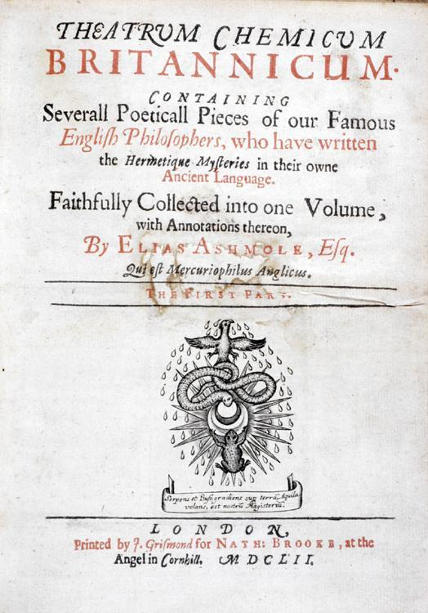
by Elizabeth Bennett, Librarian for History and History of Science, Princeton University
Photo: Elias Ashmole’s Theatrum Chemicum Britannicum of 1652 at the Chemical Heritage Foundation.
An example of the shared strength of consortium institutions is the ability to see several copies of a single rare book on one research trip. Take Elias Ashmole’s Theatrum Chemicum Britannicum of 1652, an important compilation of English alchemical texts. Copies are held by the University of Pennsylvania, the Library Company of Philadelphia, and the Chemical Heritage Foundation. Or Copernicus’ De revolutionibus orbium caelestium, according to Owen Gingerich’s census: three copies of the 1543 first edition at Princeton (including the Scheide Library copy), two of the second edition of 1566 (University of Pennsylvania and the Library Company of Philadelphia), and three of the third edition of 1617 (American Philosophical Society, Library Company, and Penn). [As a bonus, there are also two copies of the first edition at the Institute for Advanced Study in Princeton, and one at Haverford.] Or Boyle’s Sceptical Chymist: the 1661 first edition is at Penn, Chemical Heritage, and the American Philosophical Society; the 1668 Latin translation at the Library Company; and the 1680 second edition at Chemical Heritage, the College of Physicians, and American Philosophical Society. Researchers can easily discover many more examples in the consortium shared catalog at http://www.pachs.net/collections.